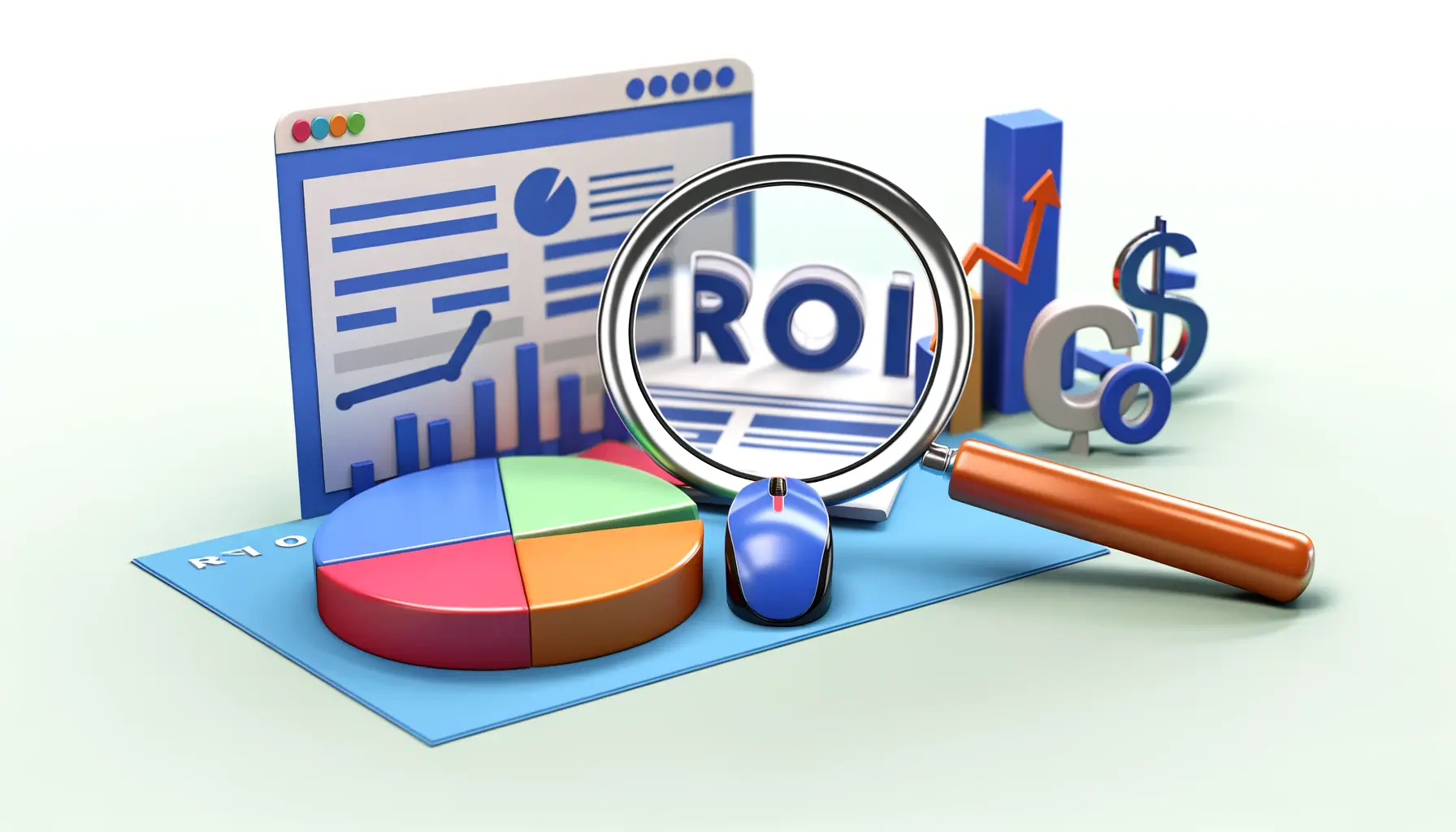Seasonal trends significantly impact how review sites attract and engage visitors.
As the seasons change, so do consumer interests, search behaviors, and ultimately, the way businesses should approach their SEO strategies.
Understanding and adapting to these shifts is crucial for review sites aiming to maximize their visibility and relevance throughout the year.
This article delves into effective optimization strategies tailored specifically for review sites, ensuring they remain at the forefront of search engine results pages (SERPs) and continue to draw in targeted traffic during peak seasonal periods.
Optimization isn’t just about tweaking a few keywords or updating meta tags; it’s about a comprehensive approach that considers user intent, content relevance, and technical SEO aspects.
By focusing on these areas, review sites can significantly enhance their performance, providing valuable insights and information to users exactly when they need it.
Let’s explore the essential strategies that can help review sites thrive in the ever-changing digital landscape.
- Understanding Seasonal SEO for Review Sites
- Optimizing Content for Seasonal Trends
- Enhancing User Experience for Seasonal Visitors
- Link Building and Outreach for Seasonal Content
- Seasonal Page Optimization Techniques
- Monitoring and Adjusting Your Strategy
- Engaging Your Audience with Seasonal Content
- Maximizing Seasonal Review Site Traffic: A Strategic Conclusion
- FAQs on Optimizing Seasonal Review Site Traffic
Understanding Seasonal SEO for Review Sites
Seasonal SEO refers to the practice of optimizing your website to capture the surge in traffic related to specific times of the year, such as holidays, events, or seasons.
For review sites, this means preparing content that aligns with what consumers are searching for during these periods.
Whether it’s the latest summer gadgets, holiday gift guides, or best winter skincare products, aligning your content with seasonal trends can drive significant traffic to your site.
But why is this important?
Simply put, during peak seasons, consumers are actively searching for products and services, and they rely heavily on reviews to make informed decisions.
By optimizing your site for these searches, you can increase your visibility, attract more visitors, and potentially boost conversion rates.
It’s a strategic approach that requires foresight, planning, and a deep understanding of your audience’s seasonal behaviors and preferences.
Identifying Seasonal Keywords
One of the first steps in optimizing for seasonal SEO is identifying the right keywords.
These are the terms and phrases that users are likely to search for when looking for products or services related to a specific season.
Tools like Google Trends and Keyword Planner can provide insights into which keywords are popular during different times of the year.
By incorporating these keywords into your content, titles, and meta descriptions, you can improve your site’s relevance and visibility for seasonal searches.
However, it’s not just about adding keywords; it’s about creating valuable content that genuinely helps your audience.
This could involve writing detailed reviews, comparison articles, or buying guides that incorporate seasonal keywords naturally.
The goal is to provide content that meets the user’s intent, offering them the information they need to make a decision while also optimizing for search engines.
Seasonal SEO is not a one-time effort but a continuous process of analyzing trends, updating content, and refining your strategy to stay ahead of the competition and meet your audience’s needs.
Optimizing Content for Seasonal Trends
Content is the cornerstone of any successful SEO strategy, especially when it comes to capitalizing on seasonal trends.
Review sites need to craft content that not only resonates with their audience’s current interests but also aligns with the seasonal keywords they’re searching for.
Here’s how to optimize your content effectively:
Creating a Content Calendar
Planning is crucial for timely and relevant content delivery.
A content calendar helps you organize and schedule your content around key seasonal events, holidays, and trends.
This ensures you’re always a step ahead, providing valuable information right when your audience is looking for it.
- Identify major events and seasons: Start by listing down significant events, holidays, and seasons relevant to your niche.
- Plan content types: Decide on the types of content you’ll create, such as buying guides, product reviews, or how-to articles, for each event or season.
- Schedule ahead of time: Give yourself enough lead time to research, write, and optimize your content before the peak season begins.
Utilizing Seasonal Keywords
Incorporating seasonal keywords into your content helps improve its visibility during peak search times.
Use keyword research tools to find terms that spike in popularity during specific seasons and integrate them naturally into your content.
- Conduct keyword research to identify high-volume seasonal terms.
- Incorporate these keywords into your content, titles, and meta descriptions.
- Ensure the keywords fit naturally and are contextually relevant to the content.
Updating Existing Content
Refreshing existing content with seasonal updates can be just as effective as creating new content.
Review and update your top-performing posts to reflect current trends and incorporate new seasonal keywords.
- Review past performance: Analyze which pieces of content performed well during previous seasons.
- Update and optimize: Refresh the content with new information, images, and relevant seasonal keywords.
- Republish: Update the publication date to bring older, high-quality content back to the forefront.
Leveraging seasonal trends in your content strategy not only boosts traffic but also positions your review site as a go-to resource for timely and relevant product information.
Enhancing User Experience for Seasonal Visitors
The user experience (UX) of your review site plays a critical role in retaining visitors and encouraging them to engage with your content.
During peak seasonal periods, when traffic increases, ensuring your site is optimized for the best possible user experience is even more crucial.
Here’s how to make your site user-friendly and conducive to higher engagement and conversions:
Mobile Optimization
With the majority of searches now conducted on mobile devices, having a mobile-optimized site is non-negotiable.
Users expect fast, accessible, and easy-to-navigate sites on their smartphones and tablets, especially when they’re in the midst of holiday shopping or looking for seasonal products.
- Ensure your site is responsive and adjusts seamlessly to different screen sizes.
- Optimize images and videos to load quickly without compromising quality.
- Simplify navigation to make it easy for users to find the content they’re looking for.
Improving Site Speed
Site speed is a significant factor in user satisfaction and SEO rankings.
Users are less likely to stay on a site that takes too long to load, which can be particularly damaging during high-traffic seasonal periods.
- Use tools like Google PageSpeed Insights to identify and fix speed issues.
- Minimize HTTP requests by reducing the number of elements on your pages.
- Enable compression and browser caching to reduce load times.
Intuitive Navigation and Search
During seasonal peaks, users are often in a hurry to find specific information or products.
Making your site’s navigation intuitive and ensuring your search function is efficient can greatly enhance the user experience.
- Organize content in a logical hierarchy that mirrors user expectations.
- Include a prominent search bar that delivers accurate and relevant results.
- Use clear, descriptive labels for categories and links to aid in navigation.
Remember, the goal is to make the user’s journey as smooth and frictionless as possible, encouraging them to stay longer and interact more with your content.
Link Building and Outreach for Seasonal Content
Link building and outreach are pivotal in amplifying the reach and authority of your seasonal content.
By securing backlinks from reputable sites in your niche, you can enhance your site’s SEO performance and drive more targeted traffic.
Here’s how to approach link building and outreach for your seasonal content:
Creating Shareable Seasonal Content
To attract backlinks naturally, your content needs to be valuable, informative, and shareable.
Seasonal content that offers unique insights, comprehensive guides, or exclusive data can encourage other sites to link back to your content as a resource.
- Focus on creating high-quality, engaging content that addresses specific seasonal needs or questions.
- Include original research, infographics, or compelling visuals that other sites will want to share.
- Consider creating round-up posts or best-of lists that are highly shareable during peak seasons.
Outreach to Relevant Sites
Proactively reaching out to other websites, bloggers, and influencers in your niche can help you secure valuable backlinks.
Personalized outreach that highlights the mutual benefits of linking to your content can increase your chances of success.
- Identify potential link partners who share your target audience and have a vested interest in your seasonal content.
- Personalize your outreach emails, explaining why your content is valuable and relevant to their audience.
- Follow up respectfully, and offer to reciprocate with a link back to their site where appropriate.
Leveraging Social Media for Link Building
Social media platforms can be powerful tools for promoting your seasonal content and attracting backlinks.
By sharing your content widely and engaging with your audience, you can increase its visibility and the likelihood of earning backlinks.
- Share your seasonal content on all relevant social media platforms, using appropriate hashtags to increase its reach.
- Engage with users who comment on or share your content, fostering a community around your brand.
- Collaborate with influencers or brands to get your content in front of a larger audience, increasing the potential for backlinks.
Effective link building and outreach require a strategic approach, focusing on creating valuable content and building genuine relationships with others in your industry.
Seasonal Page Optimization Techniques
Optimizing your review site’s seasonal pages goes beyond just updating content and keywords.
It involves a comprehensive approach to ensure these pages are fully optimized for both search engines and users.
Implementing specific optimization techniques can significantly enhance the performance of your seasonal pages, leading to better rankings and increased traffic.
Here are some effective strategies:
Structured Data Markup
Using structured data markup helps search engines better understand the content of your pages and can lead to richer search results, including featured snippets and increased visibility.
For seasonal pages, this can mean highlighting special offers, ratings, or events in a way that stands out in SERPs.
- Implement schema markup for products, reviews, and events to enhance visibility in search results.
- Use Google’s Structured Data Testing Tool to ensure your markup is correctly implemented.
- Keep an eye on the latest updates from search engines to take advantage of new types of structured data.
Optimizing for Local SEO
For businesses with a physical presence, optimizing your seasonal pages for local SEO can drive foot traffic and local online visibility.
This is particularly important during peak shopping seasons or local events.
- Ensure your business’s NAP (Name, Address, Phone Number) information is consistent across your site and local listings.
- Optimize your Google My Business profile with seasonal hours, offers, and events.
- Incorporate local keywords and geographical references into your seasonal page content.
Improving Page Load Speed
Page load speed is a critical factor in user experience and SEO.
Users are less likely to stay on a site that takes too long to load, which can be particularly detrimental during high-traffic seasonal periods.
- Compress images and use next-gen formats to reduce file sizes without losing quality.
- Minimize the use of heavy scripts and plugins that can slow down page loading times.
- Consider using a content delivery network (CDN) to speed up content delivery to users based on their geographical location.
Seasonal page optimization is an ongoing process that requires attention to detail and a willingness to adapt to new SEO practices and user behavior trends.
Monitoring and Adjusting Your Strategy
Seasonal SEO is dynamic, with trends and user behaviors changing from year to year.
To stay ahead, it’s crucial to monitor the performance of your seasonal content and adjust your strategy based on real-time data.
This proactive approach ensures your review site remains competitive and relevant, regardless of the season.
Here’s how to effectively monitor and tweak your seasonal SEO efforts:
Utilizing Analytics for Insight
Web analytics tools provide invaluable data on how your seasonal content performs.
By analyzing traffic, engagement, and conversion metrics, you can identify what works and what needs improvement.
- Track page views, bounce rates, and conversion rates to gauge the effectiveness of your seasonal pages.
- Use behavior flow reports to understand how users navigate through your site and interact with your content.
- Analyze the sources of your traffic to optimize your marketing efforts across different channels.
SEO Performance Tracking
Keeping a close eye on your SEO performance is essential for understanding how well your seasonal content ranks and attracts organic traffic.
Tools like Google Search Console can help track your visibility in SERPs.
- Monitor your keyword rankings for seasonal terms to see how well your pages are performing.
- Check for crawl errors or indexing issues that could hinder your content’s visibility.
- Review your backlink profile to ensure you’re gaining quality links that boost your site’s authority.
Adapting to Feedback and Trends
User feedback and emerging trends can offer fresh insights into how to refine your seasonal SEO strategy.
Staying adaptable and open to change is key to maintaining a competitive edge.
- Engage with your audience through comments, social media, and surveys to gather feedback on your content.
- Stay informed about the latest SEO trends and algorithm updates to adjust your tactics accordingly.
- Experiment with new content formats or marketing channels to see what resonates with your audience.
Effective monitoring and adjustment of your seasonal SEO strategy can lead to significant improvements in site performance, user engagement, and ultimately, conversion rates.
Engaging Your Audience with Seasonal Content
Engagement is the ultimate goal of any seasonal SEO strategy.
It’s not just about attracting visitors to your review site; it’s about creating an experience that keeps them coming back.
Engaging your audience with compelling seasonal content can build loyalty, encourage social sharing, and increase the likelihood of conversions.
Here are strategies to ensure your seasonal content resonates with and engages your audience:
Personalizing User Experience
Personalization can significantly enhance user engagement by making your content more relevant to individual visitors.
Tailoring the user experience based on past behavior, location, or preferences can make your seasonal content more impactful.
- Use cookies or user login data to customize content recommendations and offers.
- Segment your email marketing campaigns to deliver personalized messages based on user interests.
- Create dynamic content blocks on your site that change based on the time of year or user’s browsing history.
Interactive and Visual Content
Interactive elements and visually appealing content can significantly boost engagement, making your seasonal content more memorable and shareable.
- Incorporate quizzes, polls, or interactive guides that relate to the season and invite user participation.
- Use high-quality images, videos, and infographics to break up text and add visual interest to your content.
- Consider creating seasonal themes or layouts for your site to evoke the spirit of the season and engage visitors.
Encouraging Social Sharing
Social media can amplify the reach of your seasonal content and engage a broader audience.
Encouraging users to share your content can increase visibility and attract new visitors to your site.
- Include social sharing buttons prominently on your content pages to make it easy for users to share your content.
- Create shareable content formats, such as infographics or short videos, that are likely to perform well on social media.
- Run social media contests or campaigns that tie into your seasonal content theme to encourage participation and sharing.
Assuming all seasonal content will automatically engage your audience is a common mistake. It requires thoughtful planning, creativity, and a focus on user experience to truly resonate and drive engagement.
Maximizing Seasonal Review Site Traffic: A Strategic Conclusion
As we’ve navigated through the multifaceted strategies of optimizing review sites for seasonal traffic, it’s clear that success hinges on a comprehensive and adaptable approach.
The digital landscape is ever-evolving, and with it, the behaviors and expectations of consumers shift, especially in relation to seasonal trends.
The key to capitalizing on these shifts lies in a review site’s ability to not only anticipate these changes but to strategically align their SEO efforts to meet and exceed user intent.
Embracing a Holistic SEO Strategy
Optimization for seasonal review site traffic transcends traditional SEO tactics, demanding a holistic strategy that encompasses content creation, user experience, link building, and continuous monitoring and adjustment.
It’s about creating a synergy between what your audience seeks and what your site offers, ensuring that every touchpoint is optimized for both visibility and engagement.
- Developing a content calendar that anticipates and aligns with seasonal interests.
- Utilizing structured data to enhance visibility in search results.
- Optimizing for mobile to cater to the predominant mode of internet access.
- Engaging in proactive outreach to build backlinks and authority.
- Monitoring performance to adapt and refine strategies in real-time.
Engagement: The Ultimate Measure of Success
At the heart of seasonal optimization efforts is the aim to engage and captivate your audience.
Engagement not only signals relevance and value to search engines but also fosters a loyal community around your review site.
By personalizing the user experience, creating interactive and visually appealing content, and encouraging social sharing, review sites can transform seasonal visitors into year-round advocates.
- Personalizing content to reflect user preferences and history.
- Incorporating interactive elements that invite participation and sharing.
- Leveraging social media to extend the reach and impact of seasonal content.
In conclusion, optimizing review sites for seasonal traffic is an ongoing endeavor that requires foresight, flexibility, and a deep understanding of your audience.
By employing a strategic mix of SEO best practices, content innovation, and user engagement tactics, review sites can not only achieve higher traffic during peak seasons but also build a foundation for sustained growth and success.
The journey towards optimization is continuous, with each season offering new opportunities to refine and enhance your approach, ensuring that your review site remains a trusted and go-to resource for consumers year-round.
Want your website to top Google search rankings? Leave the SEO to our professional agency!
FAQs on Optimizing Seasonal Review Site Traffic
Explore commonly asked questions to enhance your seasonal SEO strategy and drive more targeted traffic to your review site.
Seasonal SEO involves optimizing your site to capture increased traffic during specific times of the year, such as holidays or seasonal events.
Seasonal content aligns with consumer interests at peak times, driving relevant traffic and boosting conversions on your review site.
Use tools like Google Trends and Keyword Planner to find terms with search volume spikes during specific seasons or events.
Create valuable, engaging content that addresses the needs and interests of your audience during peak seasonal periods.
Ensure your site is responsive, with fast loading times and easy navigation to cater to the majority of users accessing via mobile.
Fast-loading pages improve user experience and SEO rankings, crucial for retaining visitors during high-traffic seasonal peaks.
Yes, promoting seasonal content on social media can increase visibility, engage users, and drive additional traffic to your site.
Use analytics to track traffic, engagement, and conversions, adjusting your strategy based on data to improve future performance.













